Disclosure: This article contains affiliate links. We may earn a commission from purchases at no extra cost to you, which helps our travel content.
Standing at the edge of the Blue Lagoon, watching the milky azure waters billow steam into the frigid Icelandic air, I'm reminded that this famous geothermal pool is merely the polished façade of Iceland's remarkable volcanic identity. As an architect who specializes in structures that harmonize with extreme environments, I've developed a profound appreciation for how Icelanders have harnessed their volatile landscape. While the Blue Lagoon remains an engineering marvel worth experiencing, my multiple consulting trips to this Nordic nation have revealed far more fascinating geothermal experiences that showcase the raw power beneath Iceland's surface – experiences where nature's structural ingenuity far surpasses human design.
The Architectural Marvel of Mývatn Nature Baths
Located in northern Iceland, the Mývatn Nature Baths offer a less commercialized alternative to the Blue Lagoon while maintaining an impressive structural presence. What fascinates me as an architect is how the facility integrates with the landscape – utilizing local materials and designing sightlines that frame the surrounding volcanic terrain.
The baths themselves sit atop a geothermal field where water emerges from 2,500 meters below at a scalding 130°C before being cooled to a pleasant 36-40°C. Unlike the Blue Lagoon's engineered environment, Mývatn's design celebrates its raw setting with minimal intervention, allowing visitors to feel the natural lake bed beneath their feet.
The changing facilities demonstrate brilliant climate-responsive design principles, with thermal mass walls that retain heat during winter while providing natural ventilation channels for summer cooling. This is architecture that respects both human comfort and environmental context – something I've advocated throughout my career designing sports venues in extreme climates.
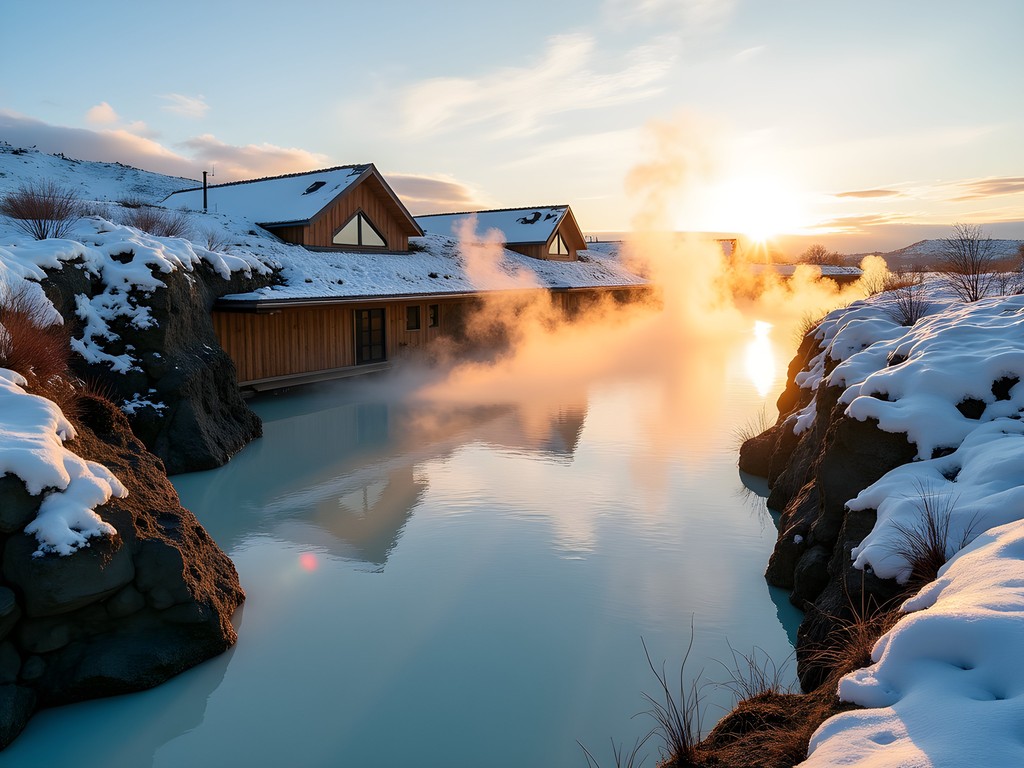
💡 Pro Tips
- Visit during weekday mornings for the lowest crowds, especially in winter
- The sulfur content is higher than the Blue Lagoon, so remove silver jewelry before entering
- Book the on-site restaurant in advance for post-soak traditional Icelandic cuisine with panoramic views
Reykjadalur: The Steaming Valley's Hidden Engineering
A 45-minute hike from the town of Hveragerði leads to Reykjadalur (literally 'Steam Valley'), where a hot spring river flows through a dramatic mountain landscape. What appears as untouched wilderness actually represents centuries of subtle human engineering that's easy to miss unless you understand what you're seeing.
The locals have strategically placed rocks to create bathing pools of varying temperatures within the river – a primitive yet effective form of thermal regulation. These stone structures divert flow rates and create microclimates within the stream, demonstrating an intuitive understanding of fluid dynamics that predates modern engineering concepts.
Before embarking on this hike, I highly recommend investing in proper thermal base layers as the temperature differential between hiking and soaking can lead to rapid cooling when exiting the water. The wind exposure at higher elevations makes proper layering essential.
The absence of changing facilities presents an interesting design challenge. I've found that a packable changing poncho provides both privacy and wind protection when transitioning between hiking and bathing attire. This lightweight solution exemplifies how thoughtful design can solve practical problems in remote environments.
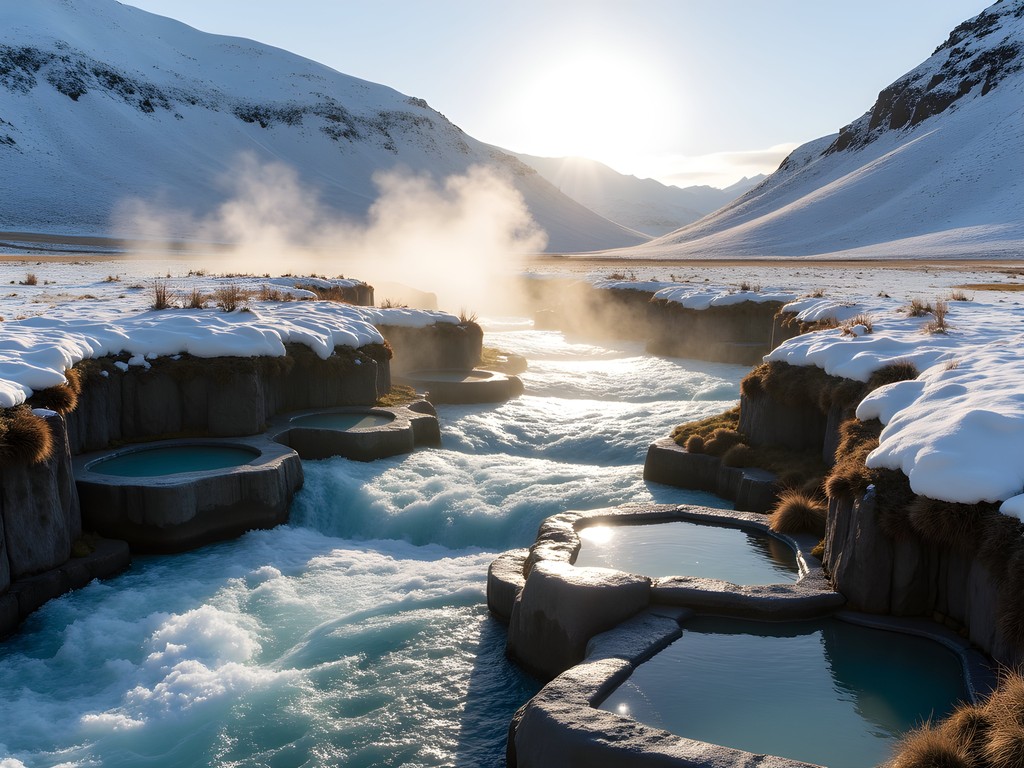
💡 Pro Tips
- The temperature gradually increases as you walk upstream – test each pool before committing
- Bring a waterproof bag for storing clothes while bathing
- Pack microfiber towels that dry quickly in the geothermal steam
Krauma: Geothermal Precision at Deildartunguhver
The Krauma baths adjacent to Europe's most powerful hot spring, Deildartunguhver, represent the pinnacle of modern geothermal engineering. As someone who has designed facilities for extreme environments, I was immediately impressed by the precision of their thermal regulation system.
The facility blends water from the 100°C Deildartunguhver spring with glacial water from Rauðsgil to achieve the perfect bathing temperature. This marriage of fire and ice exemplifies how contemporary Icelandic architecture continues to innovate while honoring traditional resource management principles.
The five distinct bathing pools maintain different temperatures through a sophisticated circulation system hidden beneath an elegantly minimalist design. The structural glass elements create a dialogue between interior and exterior environments while providing crucial wind protection – a consideration I've incorporated into several of my northern sports venue designs.
For winter visits, I recommend bringing waterproof insulated gloves to protect your hands during the transitions between pools. The metal handrails can become extremely cold, making proper hand protection essential for comfortable exploration of all the bathing options.
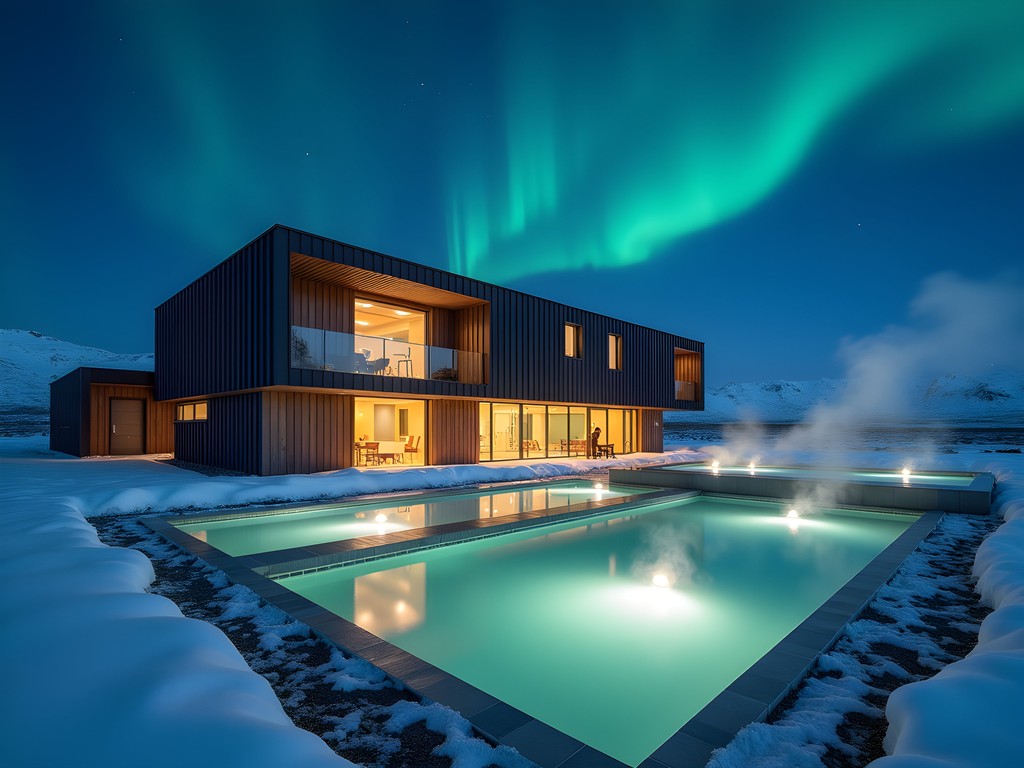
💡 Pro Tips
- Book the relaxation room in advance for post-bath recovery with panoramic views
- Try all five pools in temperature sequence for the best therapeutic effect
- Bring a silicone water bottle that can withstand temperature fluctuations between hot and cold environments
Landmannalaugar's Geothermal River: Nature's Perfect Structural Design
The highland region of Landmannalaugar presents what I consider nature's most perfect structural achievement – a geothermal river where hot and cold water sources converge in a rhyolite landscape of extraordinary color. Here, no human architectural intervention could improve upon what geological forces have created over millennia.
The bathing area sits at the confluence of multiple water sources, creating a remarkable thermal gradient that allows bathers to find their ideal temperature by simply shifting position. As an architect, I'm humbled by how perfectly this natural system regulates itself through flow dynamics and heat exchange – principles we attempt to replicate in our most sophisticated building systems.
Reaching Landmannalaugar in winter requires specialized transportation. I recommend booking a super jeep tour with experienced guides who understand the challenging highland road conditions. These modified vehicles with reinforced suspensions and specialized tire systems are engineering marvels themselves, designed specifically for Iceland's extreme terrain.
The remote location means proper preparation is essential. I never make this journey without my emergency satellite communicator, which provides reliable communication capability even in Iceland's most isolated regions. When working in extreme environments, redundant safety systems are never optional.
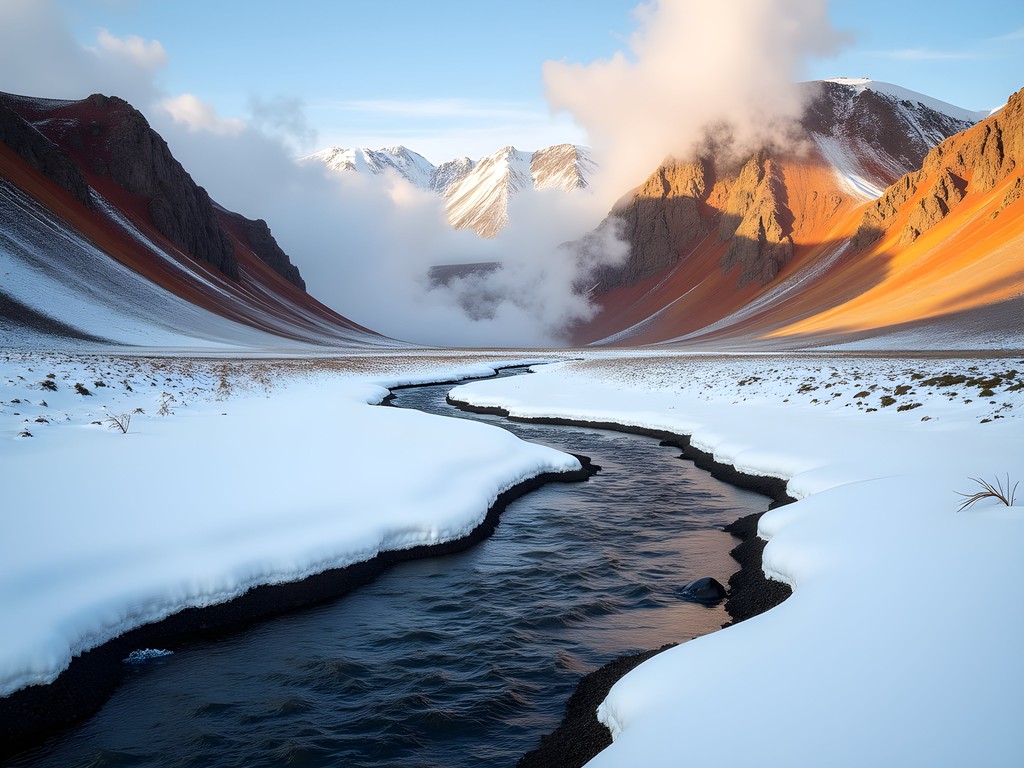
💡 Pro Tips
- Test water temperature carefully before submerging – hot spots can exceed 50°C in certain areas
- Bring non-slip water shoes as the riverbed is uneven and sometimes sharp
- Pack high-calorie snacks as the cold-hot transitions increase energy expenditure significantly
Secret Lagoon: Historical Geothermal Architecture
While Iceland's oldest swimming pool may lack the architectural drama of more modern facilities, the Secret Lagoon (Gamla Laugin) in Flúðir represents something far more valuable to me as an architectural historian – the preservation of traditional Icelandic geothermal knowledge.
Built in 1891, this historic pool demonstrates how Icelanders have long understood principles of geothermal engineering that the rest of the world has only recently begun to appreciate. The simple stone work and minimal intervention approach showcase a profound respect for natural systems that contemporary sustainable architecture strives to recapture.
The adjacent geyser, which erupts every few minutes, provides a fascinating demonstration of the volatile forces being harnessed. What appears as a rustic, even primitive facility actually represents sophisticated environmental engineering that has proven sustainable for over a century.
For winter visits, I recommend bringing a waterproof phone case to capture the remarkable juxtaposition of historic architecture against erupting geysers and steaming waters. The humidity levels around the pool can damage electronics, making proper protection essential.
The wooden pathways surrounding the main pool deserve particular attention. Their construction demonstrates traditional Icelandic techniques for creating durable structures in high-humidity, fluctuating temperature environments – a challenge that continues to vex modern architects working with contemporary materials.
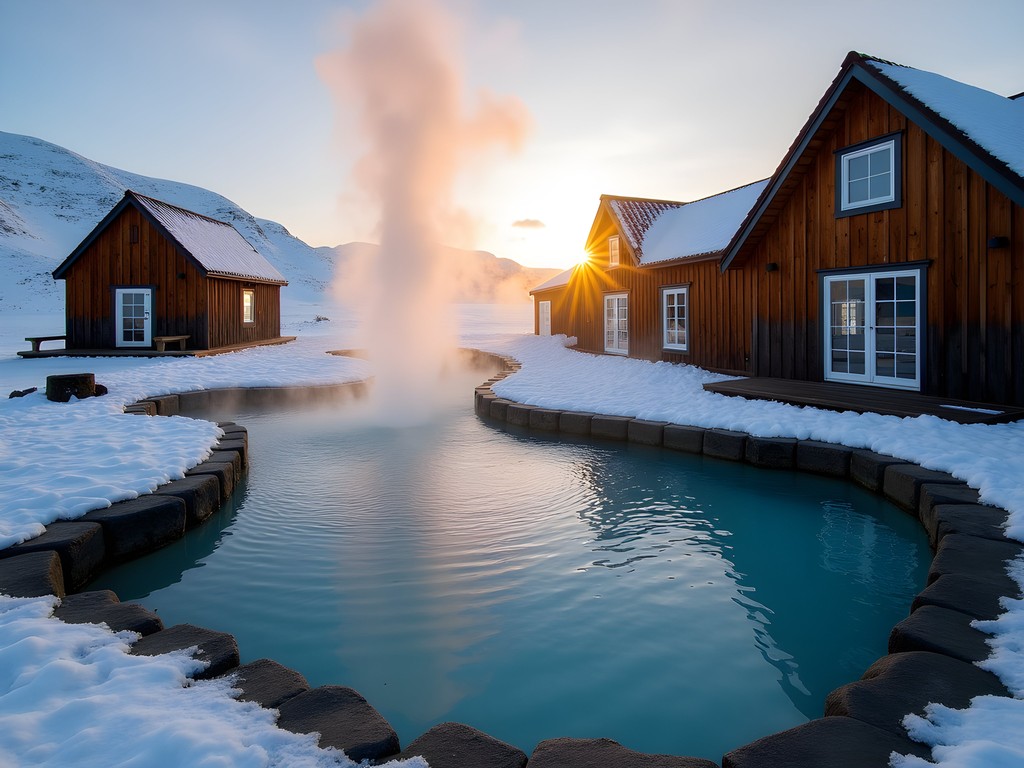
💡 Pro Tips
- Visit during the last hour before closing for dramatically reduced crowds
- Bring a waterproof head torch for evening visits when the pathways are dimly lit
- The on-site café serves traditional meat soup that perfectly complements the winter bathing experience
Vök Baths: Floating Geothermal Architecture
The relatively new Vök Baths near Lake Urriðavatn represent Iceland's most innovative contemporary approach to geothermal architecture. What distinguishes this facility is its floating design – geometric platforms extending into the lake itself, creating hot pools that appear to merge with the surrounding cold water.
As an architect who has designed structures for extreme environments, I'm particularly impressed by the engineering challenges overcome here. The thermal exchange between the heated pools and frigid lake water creates significant structural stress that requires sophisticated materials and expansion joint systems.
The angular geometric forms create a striking contrast against the organic landscape while serving practical purposes – directing wind flow to minimize heat loss and creating protected microclimates within each bathing area. This marriage of form and function exemplifies the best principles of climate-responsive design.
For winter visits, I recommend bringing a quick-dry hair towel as the transition from hot water to cold air can be particularly challenging for wet hair. The facility provides excellent body towels, but specialized hair care helps prevent the discomfort of frozen hair in sub-zero temperatures.
The tea bar, which allows you to brew herbal infusions using the geothermal water itself, demonstrates how thoughtfully integrated design can enhance the visitor experience through multiple sensory dimensions.
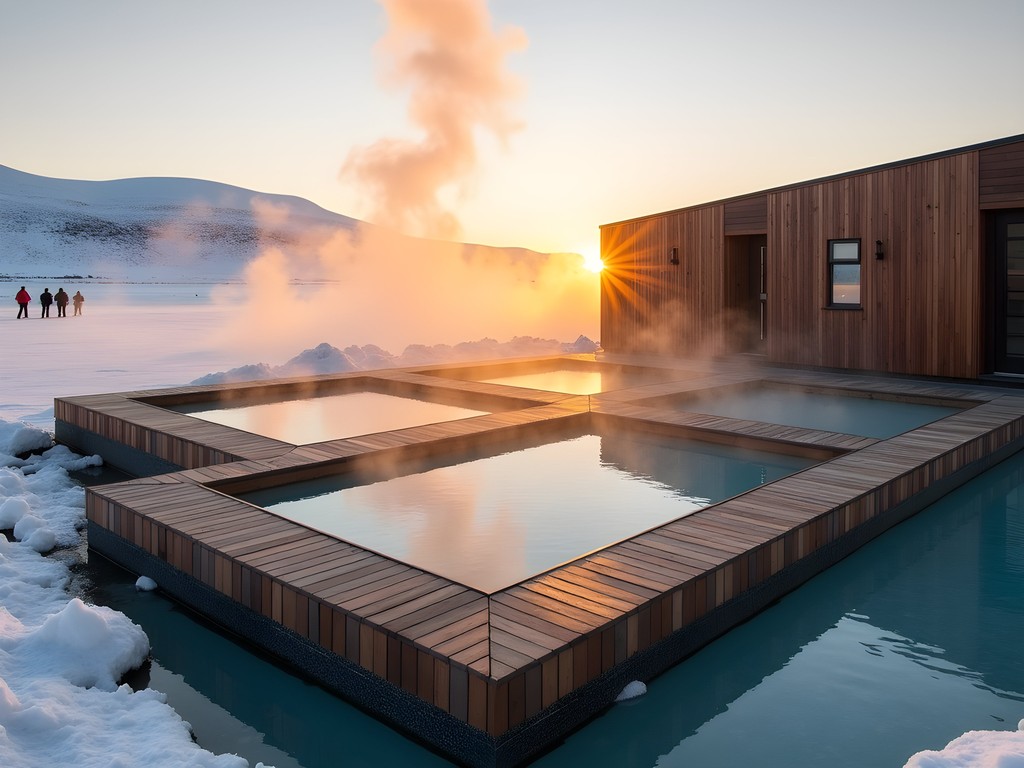
💡 Pro Tips
- Try the 'tea bar' where you can brew herbal infusions using the mineral-rich geothermal water
- Book the cold plunge experience in advance for the full contrast therapy effect
- Request the easternmost floating pool for the best mountain views and morning light
GeoSea: Engineering at the Edge of the Arctic Circle
Perched on cliffs overlooking Skjálfandi Bay near Húsavík, GeoSea represents what I consider the most ambitious structural achievement among Iceland's geothermal facilities. Its location at the edge of the Arctic Circle presents extreme engineering challenges that have been solved with remarkable elegance.
Unlike most Icelandic geothermal baths that use freshwater heated by volcanic activity, GeoSea utilizes actual seawater that emerges naturally hot from deep within the earth – a rare phenomenon that required specialized materials to prevent accelerated corrosion from the high salt content.
The infinity-edge design creates the illusion of the heated pools merging with the Arctic Ocean beyond, while the structural cantilevers extend the bathing areas dramatically over the cliff edge. As someone who has designed structures for extreme environments, I appreciate the sophisticated wind engineering that makes this exposed location comfortable even in winter conditions.
For winter visits, I recommend bringing neoprene swim shoes as the walking surfaces can be extremely cold when transitioning between pools. This small addition significantly enhances comfort when exploring all the different vantage points.
The structural glass wind barriers deserve particular attention – their precise positioning creates protected microclimates without interrupting the panoramic views. This is environmental engineering at its most sophisticated, manipulating airflow through careful structural positioning rather than mechanical systems.

💡 Pro Tips
- Time your visit for sunset when the infinity edge creates the illusion of the hot water merging with the horizon
- Book the private relaxation nook on the eastern edge for whale watching during summer months
- Use the provided silicone hair protectors as the sea minerals can make hair stiff
Final Thoughts
While the Blue Lagoon remains Iceland's most famous geothermal attraction, these seven alternatives reveal a deeper architectural story – one where human ingenuity and natural forces have established a remarkable dialogue across centuries. From the historic stone work of Secret Lagoon to the floating geometric platforms of Vök Baths, each facility demonstrates how structural design must respond to the unique challenges of harnessing volatile geothermal energy.
As an architect who has spent my career designing for extreme environments, I find Iceland's geothermal architecture particularly instructive. The principles employed here – from thermal regulation to wind engineering – have direct applications for creating more sustainable and climate-responsive buildings worldwide.
I encourage visitors to experience these sites not merely as places of relaxation, but as living laboratories where the boundaries between natural and built environments blur. By understanding how these structures work with rather than against geological forces, we gain valuable insights for addressing our most pressing architectural challenges in an era of climate uncertainty. Iceland's geothermal treasures offer not just rejuvenation for the body, but inspiration for how we might build more harmoniously with our planet's most powerful forces.
✨ Key Takeaways
- Iceland's geothermal architecture demonstrates sophisticated environmental engineering principles that balance human comfort with respect for natural systems
- Winter visits offer the most dramatic visual contrast between hot water and frozen landscapes, but require proper preparation and specialized gear
- The evolution from traditional to contemporary geothermal facilities shows how Iceland continues to innovate while honoring centuries-old knowledge of working with volcanic forces
📋 Practical Information
Best Time to Visit
November through March for maximum steam effects and fewer crowds
Budget Estimate
$3,500-5,000 USD for a week including luxury accommodations, super jeep tours, and premium geothermal experiences
Recommended Duration
7-10 days to experience multiple geothermal regions without rushing
Difficulty Level
Intermediate - Some Locations Require Hiking In Winter Conditions Or Specialized Transportation

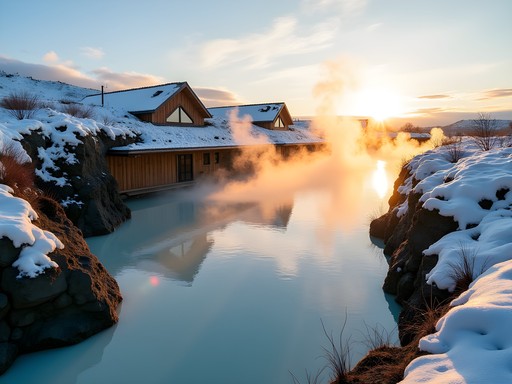
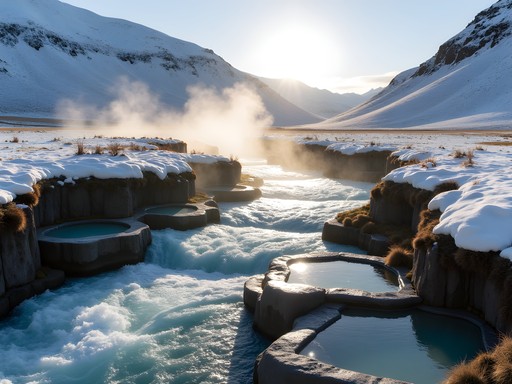

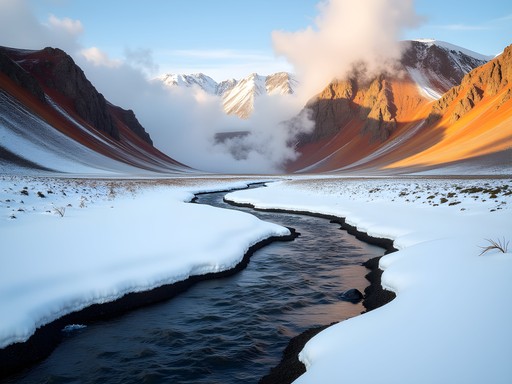
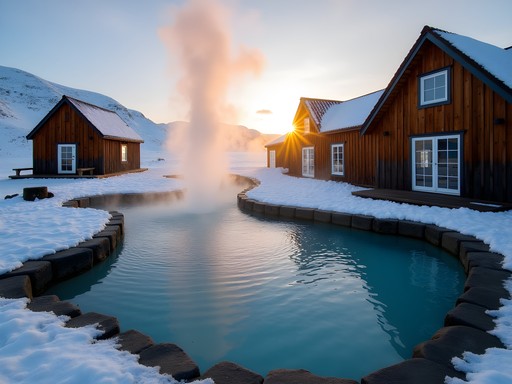
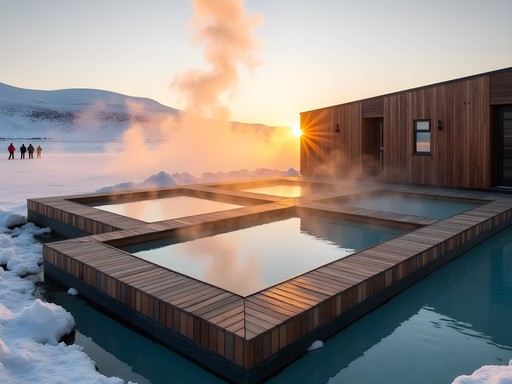






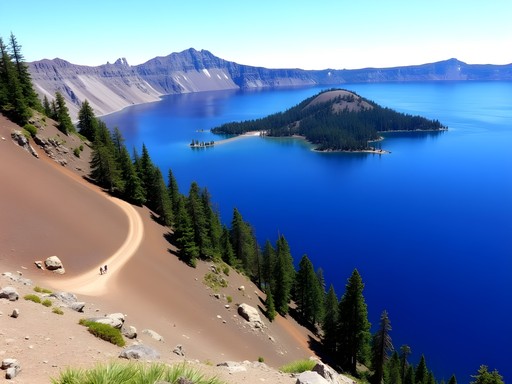


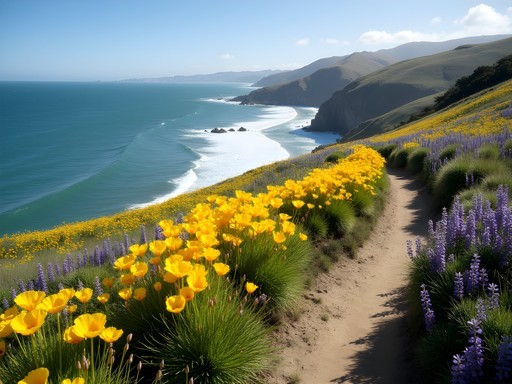
Comments
vacationking
Just got back from Iceland last month and this post is SPOT ON!! We skipped Blue Lagoon completely after reading about alternatives. Reykjadalur hot spring river was our favorite - that hike through the steaming valley was incredible and soaking in a natural hot river with snow all around was MAGICAL!!! Make sure you bring a waterproof bag for your clothes and quick-dry towel because there's no real changing facilities, just some wooden privacy screens. The varying temperatures along the river let everyone find their perfect spot. Worth every minute of that uphill hike!
islandking
Has anyone tried the Mývatn Nature Baths? Worth the journey up north? We'll be in Iceland for 10 days in January and trying to decide if we should venture that far.
Claire Hawkins
Absolutely worth it! We took our kids there last winter and it was magical - way less crowded than Blue Lagoon and the surrounding landscape is stunning. The silica mud there did wonders for my daughter's eczema too. Just be prepared for the drive if there's snow!
islandking
Thanks Claire! Did you stay overnight nearby or drive back to Reykjavik?
Claire Hawkins
We stayed at a guesthouse in Reykjahlíð for two nights - made it much more relaxing and gave us time to explore the volcanic areas around Lake Mývatn too. Highly recommend breaking up the Ring Road journey with overnight stays!
Marco Flores
Scott, this is exactly the kind of content I've been looking for! I was in Iceland last winter and found the Blue Lagoon beautiful but overwhelmingly crowded. Landmannalaugar was the highlight of my trip - that natural hot river surrounded by those rainbow rhyolite mountains was otherworldly. I spent hours soaking while watching snow fall. One tip for anyone heading there: the F-roads leading to Landmannalaugar are rough and require a proper 4x4, not just an SUV. We learned this the hard way when our rental got stuck and a local rescue team had to help us out!
coffeefan
Did you need special insurance for those F-roads? I heard regular rental coverage doesn't include them.
Marco Flores
Yes! Make sure you get the full insurance package that specifically covers F-roads. And check the rental agreement carefully - some companies completely prohibit driving on certain routes regardless of insurance.
springguy
Didn't know there were so many alternatives to the Blue Lagoon! Definitely saving this for my trip next year.
midnightsun_explorer
That shot of Landmannalaugar is stunning! Straight out of a fantasy film!
travelwithkids
Are any of these good for families with young children? My kids are 5 and 7.
sunsetguy
Secret Lagoon would be perfect for kids that age! It's smaller, not too deep, and has a nice relaxed vibe. Krauma too, though it feels a bit more upscale.
nordic_wanderer
Love this! Blue Lagoon is so overrated and overpriced.
aurora_chaser
Totally agree! We spent €30 at Secret Lagoon instead of €89 at Blue Lagoon and had a much more authentic experience.
Hunter Thompson
This post is gold! After three Iceland trips, I've learned the Blue Lagoon is just scratching the surface. Krauma was my unexpected favorite - the contrast between the scorching hot spring water and the glacial mix creates this perfect temperature. Pro tip for anyone heading to these natural spots: bring quick-dry towels and flip flops! The walk between changing areas and water can be freezing. I use my microfiber towel which packs tiny but dries super fast. Also worth noting that many of these places have much cheaper entry fees than Blue Lagoon's eye-watering prices!
icelandfan22
Great post! Are any of these accessible in winter? Planning a December trip.
Scott Hamilton
Thanks for asking! Mývatn, Krauma, and Secret Lagoon are all accessible year-round. Landmannalaugar requires a super jeep tour in winter as F-roads close. Reykjadalur trail gets very icy - I'd only attempt with proper gear and experience in winter conditions.
sunsetguy
Thanks for going beyond the Blue Lagoon! I went to Iceland last year and the Mývatn Nature Baths were actually my favorite spot - way less crowded and felt more authentic. The silica mud there works wonders on your skin too. Landmannalaugar was a bit harder to reach but absolutely worth the trek. Did you find the temperature differences between these spots noticeable? Some were almost too hot for me!
Hunter Thompson
Mývatn was my favorite too! Did you make it to Reykjadalur? That hike through the steaming valley was incredible - something special about earning your soak after a trek.
sunsetguy
I did! That hike was magical with all the steam vents along the way. Brought a sandwich and had lunch while soaking my feet. Pure bliss!
Venture X
Premium card with 2X miles, $300 travel credit, Priority Pass